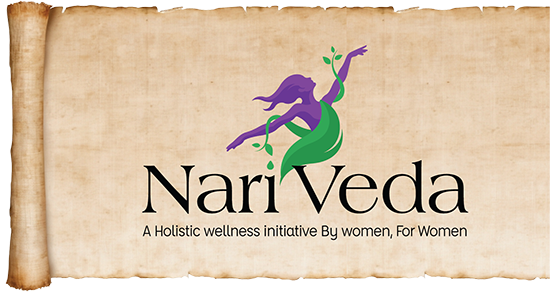Yoga & meditation

Yoga is a classical INDIAN SCIENCE DEALING WITH THE SEARCH FOR THE SOUL. The word yoga signifies both the way to discover the soul and union with it. “Yoga” is a practical aid, not a religion. It is an ancient art based on harmonizing the system of development for mind, body and spirit. The word “YOGA” comes from the Sanskrit root “YUJ” which means “to join” or “to unite”.
Spirituality completes full health and puts human affairs in the perspective of the universal values.Striving towards this goal is the main aim of yoga. Specific yoga poses not only work on the physical, spinal, digestive and circulatory well-being but also focus on clearing the mind of all negative thoughts and stress. If the mind is stressed, the effectiveness of the Ayurveda and other treatments is reduced and one is not able to see visible improvement in the long run.

Different Streams of Yoga
There are different methods in Yoga to cater the needs of different members of the society. This is because each individual has a definite level in the birth cycle and evolution. One may be at a primitive level and another may be about to reach the highest stage. People differ in the personality as Sattvika, Rajasika and Tamasika. They may differ depending on the observance of social rules in student phase (Brahmacharya)-Parent phase (Garhasthya)-Teacher phase (Vanaprastha) and detached phase (Sanyasa). Hence, a technique suitable to one man would not be suitable to all. Various streams of Yoga were introduced to suit different temperament, attitude and nature of the individual. Swamy Vivekananda has put forward the categorization of Yoga into 4 major streams viz. 1)Jnana Yoga, 2)Raja Yoga, 3)Bhakthi Yoga and 4)Karma Yoga.
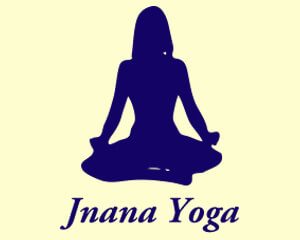
Jnana Yoga
Jnana yoga is the path of philosophy, which is a systematic way of training the mind about the realities of life by contemplation. This will strip of the ignorance (Avidya) from our mind and the mind goes to its natural state of rest. Jnana yoga is a stream of yoga that is more suitable to the people who are born genius.
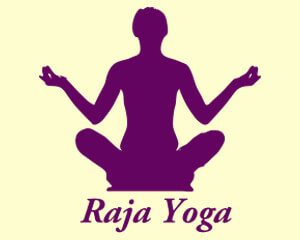
Raja Yoga
Raja Yoga is sometimes referred to as 8- fold (Ashtanga) Yoga. According to Hatha Yoga Pradeepika, Hatha Yaga is the staircase to attain Raja yoga. Raja yoga is so called because it is primarily concerned with the mind.
The mind is traditionally conceived as the king of the Psycho-physical structure. To achieve mastery over the mind, the body must be tamed first through self discipline, because of the relationship between the mind and body. Later, by controlling all thought-waves or mental modification one can attain the seedless state (Nirbhija Samadhi). This state is considered to be the starting point in the quest to cleanse karma and to attain Moksa or Nirvana.
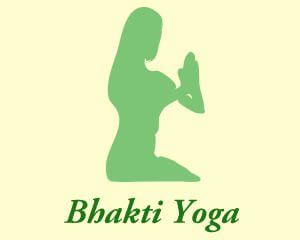
Bhakthi Yoga
Bhakthi yoga denotes the spiritual practice of nurturing and loving devotion (Bhakthi) to personal form of God. The path of worship is a systematic method of engaging the mind in the practice of divine love. This attitude of love softens our emotions and tranquilizes our mind.
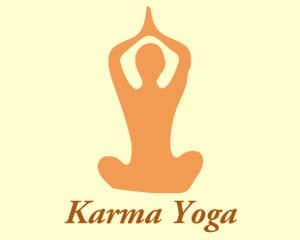
Karma Yoga
It states that one can experience salvation (Moksha) or love (Bhakthi) of God by performing their duties in an unselfish manner for the pleasure of the supreme, which is the welfare of the world.

Hatha Yoga
While streams of Yoga mentioned above have their primary concern in mind, intellect and soul, Hatha yoga has its prime concern on the body. The word ‘Hatha’ is a combination of 2 bija mantra ‘ha’ and ‘tha’. Ha means moon ‘tha’ means sun. ‘Ha’-represents mind, the mental energy and ‘tha’ represent Pranic, life force energy. Thus Hatha yoga means theunion of the Pranic and mental forces. As the pranic and mental forces unite, the awakening of the higher consciousness occurs in man. The imbalance of pranic and mental forces may cause physical or mental unrest. Hatha yoga is practiced in order to initiate a process in this physical body where by the Pranic currents and mental forces interact with each other. Hath yoga not only aims at the union of prana and mind, but also the union of prana and mind with the self.
Our yoga experts prepare regimens combining yogic postures with meditation and pranayama in consultation with our Ayurveda and wellness experts to ensure a more synchronised approach. Mental health problems such as depression, anxiety, stress, and insomnia are among the most common reasons for individuals to seek treatment with complementary therapies such as yoga. Yoga encourages one to relax, slow the breath and focus on the present, shifting the balance from the sympathetic nervous system and the flight-or-fight response to the parasympathetic system and the relaxation response. The latter is calming and restorative; it lowers breathing and heart rate, decreases blood pressure, lowers cortisol levels, and increases blood flow to the intestines and vital organ
-
Yoga for Insomnia
Restorative postures, savasana, pranayama, and meditation encourage pratyahara, a turning inward of the senses which enables downtime for the nervous system, the byproduct often being improved sleep. Because of its ability to increase relaxation and induce a balanced mental state, yoga has been studied to evaluate its possible effects on sleep and insomnia. Regular practice of yoga resulted in a significant decrease in the time taken to fall asleep, an increase in the total number of hours slept, and in the feeling of being rested in the morning.
-
Yoga for Skin Health
The sensory nerve endings are razor sharp due the stretch given by the asanas and this in turn maintains the neuro-vascular functions of the skin. The skin blood flow is stimulated preventing senile changes. The joints are adducted, abducted, rotated and circumducted in yogic practices which in turn gives corresponding stretches and compressions for the skin also.Yoga practice has the potential to reduce facial wrinkles and produce a natural ‘face-lift’. This is mainly due to the inverted postures such as the head and handstands. Performing these postures for a few minutes each day has the potential to reverse the effects of gravity and use it to our advantage. It also increases the circulation to the fact that will bring much-needed nutrients and oxygen to rejuvenate and remove toxin-causing matter. Mentally one will become calmer and the body will not experience stress like effects that will cause one to frown. The quality of the sleep improves a lot that helps in a fresh ready to go look.
The inverted postures causes an increase in blood supply to the hair follicles in the scalp, even increased flexibility of the neck produced by the asanas also help by removing the pressure on the blood vessels and nerves in the neck, therefore giving the head an even greater blood supply on the scalp. The nerves in the neck supply the scalp muscles and the release of pressure on the nerves in the neck will help the scalp muscles to relax. This gives the hair follicles better nourishment and in turn thicker hair is the ongoing result. Pranayamic practices promote healthy excretory functions of the skin. It promotes excellent blood flow to the dermis. Toning up of the glandular function of the skin occurs. Thermal regulatory functions of the skin are well regulated by pranayama. -
Yoga to improve Immune System
Stress has a negative impact on the immune system and prolonged exposure increases susceptibility to disease and leads to physical and mental health problems such as anxiety and depression. Practicing yoga and meditation as a means to manage and relieve both acute and chronic stress helps individuals overcome other co-morbidities associated with diseases and leads to increased quality of life. As a non-pharmacological form of treatment, yoga based interventions are an alternative option for the treatment of mood disorders.
-
Cardiac health
Yoga increases blood flow and levels of hemoglobin and red blood cells which allows for more oxygen to reach the body cells, enhancing their function. Yoga also thins the blood which can decrease the risk of heart attack and stroke, as they are often caused by blood clots. Twisting poses wring out venous blood from internal organs and allow oxygenated blood to flow in when the twist is released. Inverted poses encourage venous blood flow from the legs and pelvis back to the heart and then pumped through the lungs where it becomes freshly oxygenated.
In addition to the effects of yoga on mood disorders and stress reduction, yogic practices are shown to improve cardiorespiratory performance, psychological profile, and plasma melatonin levels and also significantly reduced systolic blood pressure, diastolic blood pressure, mean arterial pressure, and orthostatic tolerance. Furthermore, yoga helps to improve the cardiovascular efficiency and homeostatic control of the body and results in improvements in autonomic balance, respiratory performance, and overall well-being. Yoga based lifestyle modifications were also shown to aid in regression of coronary lesions as well as to improve myocardial perfusion in patients with CAD. Inevitably, cardiovascular parameters alter as one ages, but these age-related deteriorations in cardiovascular functions are slower in persons who practice yoga regularly as yoga practitioners had lower heart rate as well as lower systolic and diastolic blood pressure than matched controls. -
Pain management
Yoga helps to build muscle mass and/ or maintain muscle strength, which protects from conditions such as arthritis, osteoporosis and back pain. During a yoga session, the joints are taken through their full range of motion, squeezing and soaking areas of cartilage not often used and bringing fresh nutrients, oxygen and blood to the area, which helps to prevent conditions like arthritis and chronic pain. Without proper sustenance, neglected areas of cartilage will eventually wear out and expose the underlying bone. Yoga also increases proprioception and improves balance.
Judicious practice of asana, meditation or a combination of the two can reduce pain and disability while improving flexibility and functional mobility in people with a number of conditions causing chronic pain. Additionally, in some cases use of pain medication can also be reduced or eliminated completely. Yoga was also shown to improve gait function and reduce age-related changes in gait among a group of healthy, non-obese elders.
-
Yoga for cancer Rehabilitation
Practice of yoga helps cancer patients to reduce the post-chemotherapy-induced nausea frequency, nausea intensity, intensity of anticipatory nausea, and anticipatory vomiting. Yoga practice also help to decrease anxiety, depression, and distressful symptoms and also showed significant reduction in toxicity scores compared to the controls. Yoga, breathing exercises, and meditation can reduce stress, promote healing, increase energy, decrease adverse treatment effects, and enhance quality-of-life for patients with cancer.
-
Yoga for Geriatric care
Practice of yoga improves the self-reported quality-of-life as well as measures of physical function among an elderly population. Yoga can produce an invigorating effect on mental and physical energy that improves fitness and reduces fatigue. Additionally, when practicing yoga, a fundamental emphasis is placed on accepting one’s moment-to-moment experiences creating mindfulness and not forcing the body past its comfortable limits. Having this healthy sense of acceptance is especially important for individuals dealing with life-threatening illness as it decreases the stress one experiences from unpleasant symptoms. As this tension is released, energy flows more readily throughout the body and allows patients to experience a sense of increased well-being and strength as well as a balance of mind, body and spirit. Yoga also shown to improve gait function and reduce age-related changes in gait among a group of healthy, non-obese elders.
-
Yoga for Adolescent Care
In today’s modern, technologically advanced world, the youngsters, especially the adolescents, are prone to addition to electronic media, gadgets, internet, games and lot more of such kind. The excessive use of them not only makes these young minds addictive but depletes them of their health and mental calibre.
The roots of addiction to gadgets/social media/gaming/visual media etc. are absolutely mind-related and the practice of regular meditation encourages these addicts to accept the basic impermanence of human experience. It helps them to develop a detached awareness of thoughts. Yoga and meditation practices exert positive influence on addictive behaviours. Through the practice of yoga, addicts shift from self-inflicted harm and disrespect toward their bodies to more respectful, caring, and loving behaviours. Consistent yoga practice improves depression and can lead to significant increases in serotonin levels coupled with decreases in the levels of monamine oxidase, an enzyme that breaks down neurotransmitters and cortisol. -
Yoga for Obesity
Eating disorders are a specific type of addiction and yoga appears to be beneficial in improving body image disturbances and useful in the recovery from eating disorders. One study found that female yoga practitioners attribute their positive feelings and sense of well-being to yoga practice and report less self-objectification, greater satisfaction with physical appearance and fewer disordered eating attitudes compared to non-yoga practitioners.
-
Yoga for Androcare and Blossom at 40
Currently, treatment for anxiety and depression involves mostly psychological and pharmacological interventions; however, mind-body interventions are becoming increasingly popular as a means to reduce stress in individuals. Yoga, a form of mind-body exercise, has become an increasingly widespread therapy used to maintain wellness, and alleviate a range of health problems and ailments. Practice of Yoga helps as complementary therapy or alternative method for medical therapy in the treatment of stress, anxiety, depression, and other mood disorders to create a greater sense of well-being, increase feelings of relaxation, improve self-confidence and body image, improve efficiency, better interpersonal relationships, increase attentiveness, lower irritability, and encourage an optimistic outlook on life.
Yoga is an ancient practice that unites the mind, body, and spirit through a series of physical postures, breathing exercises, and meditation techniques. Rooted in Indian philosophy, yoga offers a holistic approach to health, focusing on balance, flexibility, strength, and mental clarity. Through consistent practice, yoga helps reduce stress, enhances mindfulness, improves physical resilience, and fosters inner peace. Embracing yoga as a lifestyle encourages harmony with oneself and the world, promoting a deeper sense of well-being and self-awareness.
Pranayama
Duration: 60 minutes
The regulation of the breath through certain techniques and exercises.
Yoga awareness Programme
Duration: 60 minutes
Demonstration of different Asanas, Surya Namaskar and Pranayama.
General Yoga
Duration: 60 minutes
Loosening exercises, basic Asanas, Relaxation techniques and Pranayama.
Advanced Yoga
Duration: 90 minutes
Demonstration of classic Asanas, Surya Namaskar, Relaxation techniques, Pranayama and Meditation.
Surya Namaskar Series
Duration: 60 minutes
Classic Sun salutation comprising of 12 steps and its variations to source out cosmic energy.
Mudras and Bandhas
Duration: 60 minutes
A combination of subtle physical movements which deepens awareness and concentration.
Meditation
Duration: 30 minutes
The most powerful mind development program on earth; capable of giving boundless energy.
Satkarmas
Duration: 60 minutes
Satkarma is the practice of six cleansing techniques to remove the excess Kapha and Medhas from the body.
Yoga for Children
Duration: 60 minutes
Mind and body development program for children which includes Asanas, Surya Namaskar, and Pranayama.

Basic Yoga 3 days
This includes fat burning exercises, yoga exercises for eyes and neck, basic asanas, Relaxation techniques and Pranayama.

Intermediate Yoga 7 days
This includes classical asanas, Surya Namaskar, Relaxation techniques, Pranayama, Mudras and Meditation.

Advanced Yoga 14 days
This include classical Asanas and its variations, Surya Namaskar, Relaxation techniques, Pranayama, Shat Karma, Mudras and Bandhas Relaxation techniques and meditation.


